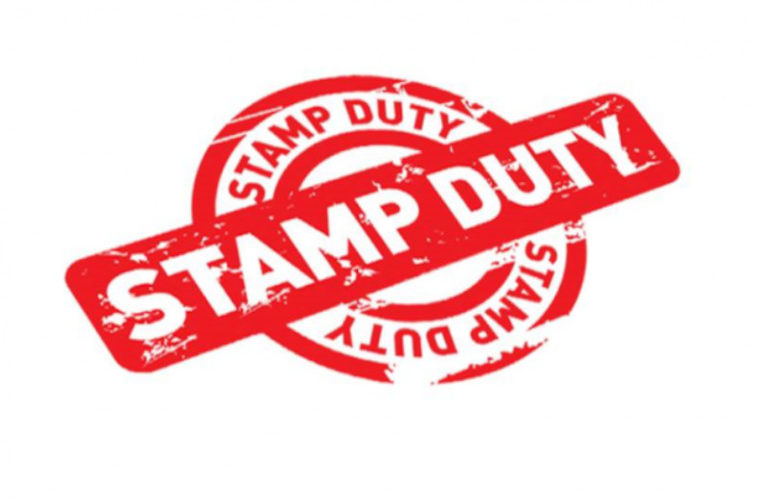What is stamp duty?
Stamp duty is a type of tax to be paid on certain documents/instruments.
Why is it necessary to pay stamp duty?
Stamp duty is required to be paid, for the following reasons: – 1. If stamp duty is not paid at the prescribed rate, as per nature of the document or the true market value of the subject property, the document is treated as Not Duly Stamped. 2. A document which is Not Duly Stamped, is not treated as legal proof of the transaction mentioned in it. 3. If stamp duty is not paid in time or is less paid, then it invites penal action.
What is a ‘Bond’?
A bond generally means: A document by which, a person imposes on himself a binding to pay to another person, on condition that such binding shall be void if specified Act is performed or not performed as the case may be. A document by which, a person imposes on himself a binding in the presence of witnesses, to pay to another person, money, food grains, or agricultural income.
What is meant by ‘Conveyance deed’?
Conveyance deed generally means a document by which one party transfers his right, title, interest or the vested in immovable or movable property or any estate in favour of any other party to the document, except for which some separate provision is available for in Schedule-1 of Maharashtra Stamps Act. The following kinds of documents fall under this category: 1. Conveyance on sale 2. Every Instrument 3. Every decree or final order of civil court 4. Order issued by High Court under Section 394 of Company Law, 1956 regarding amalgamation and reconstruction of companies, or order issued by Reserve Bank vide Section 44 A of Reserve Bank of India Act, 1934 regarding amalgamation and reconstruction of banks.
What is meant by ‘Gift deed’?
Gift deed generally means: A document by which, a person gifts his self acquired property to another person out of his wish and will, without asking for monitory consideration for it. A person gifting the property is generally called as the ‘donor’ and the person accepting is generally called as the ‘donee’.
What is meant by ‘Partition Deed’?
Partition deed a document by which the co-owners or coparceners of the property, fix their individual share or divide the property by metes and bounds to show their independent share. Following kinds of documents are included in this category: 1. Final order issued by Revenue Authority or Civil Court effecting the partition. 2. An award by Arbitration Tribunal directing division; and 3. A document of any nature regarding division of property, written and signed by the coowners or the coparceners.
What is meant by ‘Lease deed’?
Lease deed in generally means lease deed of immovable or movable property or of both. The following writings come under this category; 1. Patta 2. A writing commonly known as ‘kabulayat’; or A written agreement regarding payment of rent for immovable property but not lease in duplicate for cultivation. 3. Any document by which right to levy Toll tax is let. 4. Any material written with the objective to show that application for lease has been sanctioned or granted. 5. Decree or Final Order of any Civil Court in respect of lease.
What is meant by ‘Mortgage deed’?
A mortgage deed is a document by which, the debtor to secure the amount/loan given or to be given by the creditor, creates or transfers a right in or upon his property in favour of the creditor.
What is meant by ‘Power of attorney’?
Power of attorney is a document by which, a person authorises another person to act on his behalf and in his name which include powers to sign and take decisions required on behalf the person giving the power of attorney. Similarly, powers given to represent on behalf of the principal in any court, tribunal or before any authority also fall under this category. However, this category does not include the Vakalatnama given to an advocate to carry on the proceedings.
How stamp duty is to be paid on the document?
Stamp duty is to be paid by affixing non-judicial stamps to the document.
What is meant by ‘Non-judicial stamp’?
Generally Stamps are of two kinds, 1. Judicial Stamp and 2. Non-judicial stamp. The difference between these two stamps, is as follows: Judicial stamp Non-judicial stamp In common language judicial stamps are recognised as are called non-judicial stamps ‘Court fee stamp’ Judicial stamps are used to pay Non-judicial kind of Stamp are used to pay Court- fee Stamp duty on documents such as sale, gift,. lease, agreements etc. Stamps used for making deeds and documents Note: The ordinary postal tickets are not included in the above two categories. However, the India Revenue tickets available at post offices, to be affixed to receipts fall in the non-judicial stamp category.
Are there any categories in non-judicial stamps?
Yes, there are two main types of non-judicial stamps. They are: Impressed stamps- A stamp paper on which document can be typed or be written. Adhesive stamps – A stamp tickets which can be pasted/affixed on written or printed document.
Which kinds of impressed stamps available for use?
Following kinds of impressed stamps are available for payment of stamp duty: Stamp Paper (A non- judicial stamp paper supplied by the stamp vendor or treasury) E-SBTR (A receipt similar to stamp paper received on electronic payment from the banks) Simple Receipt (A receipt or challan generated on making electronic payment to the Government Virtual Treasury) Franking (Any stamp impression made by the machine on payment of duty in Government Offices or to Authorised franking vendors).
How to use Impressed Stamps, for payment of Stamp duty?
Impressed stamps should be used in the following manner; Impressed stamp purchased should be utilized within six months from purchase. Impressed stamp purchased, if cannot be utilized within six months of purchase for some reasons, then an application should be made for refund of stamp duty within six months from date of purchase. If the impressed stamp is not utilized nor refund application is not made in within six months from the date of purchase, the purchased stamp becomes null and void, which may result in waste of money. While using stamp paper, the writing of the document should start from the top side of the stamp where the impression appears. If multiple stamp papers are used, then at least some portion of document written should appear, on each stamp paper. If document is too long and the stamp paper is found insufficient for writing, you can attach extra blank sheets and complete the document. (Section 14 of Maharashtra Stamp Act, 1958.) If above rules are not followed, it is assumed that stamp duty has not been paid for the document. For the documents to be registered, it is expected that the writing should be done on both sides (back to back) of stamp paper.
What is meant by the term ‘Using stamp within six months of purchase’?
The term ‘Using the stamp within six months of its purchase’ means, it is essential that the document for which the stamp is purchased, should be written on it and signed (executed) within six month of purchase.
WHEN TO PAY STAMP DUTY
When does a document become liable for stamp duty charge?
1.If the signing (execution of document) is done in the State of Maharashtra, stamp duty becomes applicable immediately on signing of document. 2.If there are multiple number of people signing the document(executing the document) and the signing is done on different dates, in such cases stamp duty becomes applicable immediately on the first person signing the document.
What is the meaning of ‘executed and execution’ in respect of a document?
In respect of a document ‘Executed’ means that the concerned document has been signed and ‘Execution’ means signing of the concerned document.
Is there any time limit to pay stamp duty, on signing for a document?
Yes! The stamp duty is required to be paid before signing, at the time of signing or by the next working day after signing of document, for the documents which are signed in the State of Maharashtra.
What is the rule if the document is signed out of the State of Maharashtra?
If the document is signed out of the State of Maharashtra then appropriate stamp duty is required to be paid within three months of first receiving such document in the State of Maharashtra.
Stamp duty payment, whose responsibility?
Generally, in case where the document requires signature of the single party, it is the responsibility of the person signing the document to pay the stamp duty. In case where multiple parties sign the document, the law has given option to decide amongst them, who should bear the stamp duty. If this option is not exercised then as per Section 30 of Maharashtra Stamp Act, the responsibility to pay the stamp duty is fixed as follows:- Sr. No. Kind of Document Party responsible to pay stamp duty 1. Agreement for sale of property, Sale Deed, Conveyance Deed, Certificate of Sale of The purchaser/Transferee Property etc.,, 2. i. All types of Bonds and Mortgage Deeds One, with whose signature it is made. ii. Further charge Mortgage Deed iii. Release of Right Deed iv. Settlement Deed v. Transfer of Rights by Debentures or Mortgage vi Bond 3. Lease Deed Lessee/Tenant 4. Second Copy of Lease Deed Lessor/Owner 5. Partition Deed All parties in proportion to their Shares or as directed by the arbitrator Tribunal /Court. 6. Any Other Type Person Signing Document.
PAYMENT OF STAMP DUTY
How can the stamp duty be paid?
The main sources for payment of stamp duty are, as follows: – 1.e-payment 2.Traditional Stamp Papers and Adhesive Stamps. 3.Franking of stamp impression.
What are the modes of obtaining stamps, for payment of stamp duty?
Detailed information for obtaining stamps is as follows: Sr. No. Type of Stamp Place/Location Limit of Stamp Duty Payment 1. e-paymentsimple receipt /e-challan A. Simple receipt/e-challan can easily be obtained sitting at home, using internet banking facility, for which you need a net-banking account of the participating bank, operating GRAS system of Government of Maharashtra, or B. From the bank counter of the participating bank, operating GRAS system of Government of Maharashtra. A. Unlimited Amount B. Rs. 300/- and amount higher than that. The list of participating banks mentioned in ‘A’ and ‘B’ above is available on the website ‘www.igrmaharashtra.gov.in’ under heading ‘Agencies’ at place ‘Banks’ and also on the website ‘https://gras.mahakosh.gov.in’ 2. e-payment e-SBTR e-SBTR can be obtained through the participating banks authorised for issuing e-SBTR (List of such banks is available on Registration and Stamp Department’s website www.igrmaharashtra.gov.in Under heading ‘Agencies’ at place ‘Bank’ and also on the website http://gras. mahakosh.gov.in e-SBTR is issued only in cases where the stamp duty amount is Rs. 5000/- and above that. 3. Impressed stamp papers. 1. Chief Stamp Office, Mumbai 2. Offices of all District Treasuries and all Deputy Treasuries 3. Stamp Vendors holding Stamp Vending License. (List is available on Registration and Stamps Department website www.igrmaharashtra.gov.in Under heading ‘Agencies’ and place ‘Others’ Unlimited amount. Unlimited amount. Up to Rs. 30,000/- in single document Department website www.igrmaharashtra.gov.in Under heading ‘Agencies’ and place ‘Others’ Unlimited amount. Unlimited amount. Up to Rs. 30,000/- in single document 4. Franking Franking Stamp Vendors holding License (List is available at Registration and Stamps Department website www.igrmaharashtra.gov.in under heading ‘Agencies’ and place ‘Others’ Up to maximum of Rs. 5000/- for single document.
Is there any procedure for rounding up the stamp duty payable?
Yes. Rule regarding rounding up of stamp duty is as follows: – Stamp duty needs to be paid by rounding up the figure to earlier or next one hundred rupees. That is to say; For stamp duty payable of up to next Rs. 49/-, preceding Rs. 100, and For stamp duty payable more than Rs. 50/- next Rs. 100/- For example 1.If stamp duty payable is Rs. 319/- , then actually you need to pay Rs. 300/- stamp duty. 2.If stamp duty payable is Rs. 750/- then actually you need to pay Rs. 800/- stamp duty.
In the case of documents like Sale deed, Gift deed and Usufructuary mortgage deeds, why additional stamp duty of 1% is charged?
In the case of documents like Sale deed, Gift deed and Usufructuary mortgage deeds, additional stamp duty of 1% is charged because, such provisions are made in the concerned local bodies Act. For example, Maharashtra Municipal Corporation Act, Zillha Parishad Act etc. The 1% addition duty collected is no received by The Registration and Stamps Department but, passed on to the concerned local self Governments through the State Government. Area wise this tax is addressed by following names: Sr. No. Area Name of tax 1. Zilla Parishad limits Zilla Parishad Tax 2. Municipality/Municipal Council/Nagar Panchayat limits. Nagar Parishad Tax 3. Municipal Corporation limits. Local Body Tax 4. Nagpur Improvement Trust limits. Nagpur Improvement Trust Tax.
What are the provision of penalty, if there is a delay in payment of stamp duty?
If there is a delay in payment of stamp duty, A penalty at the rate of 2% per month is charged on the less paid amount of stamp duty. This penalty is charged from first signing of the document till the required duty being paid to the Government. The action regarding less payment of stamp duty and charging penalty is taken by the concerned Collector of Stamps. The maximum limit of penalty is, (400%) the amount of the less paid stamp duty. However, demand for stamp duty if overlooked and the stamp duty and penalty amount is not paid recovery is made as arrears of land revenue and stamp duty and penalty amount is recovered by confiscating the land and effecting its sale.
In what circumstances a refund of stamp duty can be obtained?
Refund of stamp duty can be obtained in the following circumstances: A. Before signing of document by any person, if the stamp paper has been rendered unfit for its use, because being inadvertently spoiled due to errors in writing. B. Unsigned stamp paper written fully or partly but which is not to be used. C. Signed document/stamp paper but, in case where : – 1. The party has subsequently found it to be entirely illegal since the beginning (Void/ ab/ initio) as per Section 31 of Specific Relief Act. 2. The court has subsequently found it to be entirely illegal since the beginning (Void /ab/ initio) as per Section 31 of Specific Relief Act. 3. Is found to be unfit for use due to any deficiency or mistake. 4. The person whose signature is essential has died without signing the document or has refused to sign the document, for which the transaction cannot be completed. 5. Any party to the document has not signed the document or is unable/ incapable of signing the document or has declined to sign it, for which it may not be possible to complete the intended transaction. 6. Any party to the document has refused to act as per terms of the document or pay the agreed sum or has refused to give acceptance/approval to it. 7. If the intended transaction might have been completed with the help of another document between the same parties having no less stamp duty, than the earlier document. 8. If the Stamp purchased for the document being of insufficient value, the same transaction has been completed by another document with the Stamp of the proper value between the same parties. 9. That stamp paper might have been spoiled inadvertently, unintentionally for which the same parties might have executed another document for the same purpose.
Is there any time limit, for submitting refund of stamp duty application, in The Office of Collector of Stamps?
Yes! Are case wise different time limits for submitting refund of stamp duty application in the office of Collector of Stamps for to the office of Collector of Stamps which are as follows:- Sr. No. Type of Stamp Refund Case Time Limit for Application 1. Under Section 48(1), cases regarding executed documents. Within six months from execution 2. Under Proviso to Section 48(1), refund against Cancellation of an Agreement for Sale. Within two years of date of registered cancellation of document. 3. In cases of replacement of a document by other document. Within six months of date of replacement of a document. 4. In other cases. Within six months of purchase of stamp.
Are there any deductions made, while refunding the stamp duty? If yes! How much is the deduction?
Yes. Some amount is deducted while making refund of Stamp duty, which is as follows:- For stamps falling in the category of e-payment (simple receipt/e-challan and e-SBTR), 1 percent amount is deducted with the minimum of Rs. 200/- and a maximum of Rs. 1000/- is deducted. For category stamps other than mentioned above a deduction of 10% is made.




